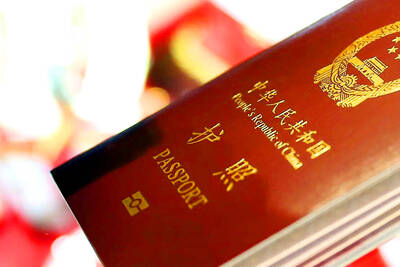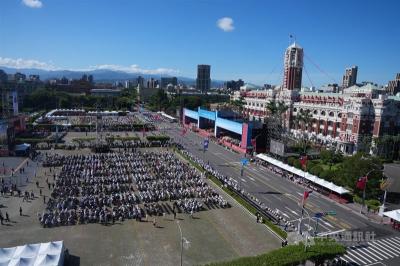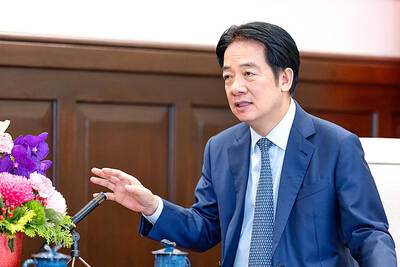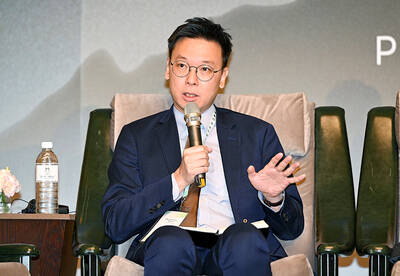As the world’s greatest soccer players take to the fields at the FIFA World Cup in South Africa, many are wearing jerseys made almost entirely from plastic bottles rescued from landfills in Japan and Thailand.
It is, if nothing else, good publicity for Nike, the maker of the jerseys and the official sponsor of nine teams, including the US, Brazil and Portugal.
Yet what many might view as a gimmick is also part of a broadening effort by the company to incorporate “sustainability,” or environmentally responsible practices into its product design. Around the globe, a growing number of manufacturers are including more recyclable or biodegradable components into products.
Companies making changes run the gamut from furniture makers to carpet manufacturers to clothing retailers and makers of shampoos and household cleaners. And with big-box retailers like Wal-Mart joining the fray, industry analysts say the sustainable philosophy is no longer viewed as the province of high-end sellers like Nike or Herman Miller, the furniture maker.
In 2008 alone, US consumers doubled their spending on sustainable products and services to an estimated US$500 billion, according to a survey by Penn Schoen Berland Associates that polled more than 1,000 people.
The movement can be confusing to navigate and goes by many monikers — “Cradle to Cradle,” eco-efficiency, life cycle improvement, closed loop production. In its most utopian form, it envisions a world in which all products are made from natural materials and are 100 percent reusable, recyclable or biodegradable.
At its most pragmatic, it is mainly about cutting costs — by reducing waste, selling recyclable components and reusing byproducts like rubber or plastic to create a new product. For a large company, this can mean millions of dollars in annual savings.
“When sustainability burst onto the scene, it was in the responsibility category, something that a company should do because it was the right thing to do,” said Beth Lester, a vice president at Penn Schoen Berland Associates, a market research firm that studies the green economy.
But now it is equally about saving money, she said.
For example, Wal-Mart attributed more than US$100 million of its revenue last year to a decision to switch to a recyclable variety of cardboard in shipments to its 4,300-plus stories in the US. Now it sells the cardboard to a recycler rather than paying to ship the waste to a landfill.
The company also sells photo frames made from its polystyrene waste and uses plastic cut-outs from the legs of Walmart-brand diapers to make baseboards for walls in its stores.
“It’s coming from economics,” said Marc Stoiber, vice president for green innovation at the Chicago-based business consultancy Maddock Douglas. “If you look at the big guys like Wal-Mart, they embrace green because it’s all about efficiency.”
Matt Kistler, the senior vice president of sustainability at Wal-Mart, agreed.
“If this was not financially viable, a company such as ours would not be doing it,” he said.
In its most ambitious project, Wal-Mart has embarked on a yearlong effort to tag every product it sells with information about its production and life cycle after surveying more than 100,000 suppliers worldwide.
Nike first dipped its toe into sustainability in 1993, when it began grinding up old shoes and donating the material and other manufacturing scraps to builders of sports surfaces, like tracks and basketball courts. That program continues, but the company has shifted gradually from one-off initiatives to a long-term plan to “minimize or eliminate all substances known to be harmful to the health of biological or ecological systems.”
In the past four years, the company’s sustainable design group, known as Nike Considered Design has brought shoes and athletic clothing to market that incorporate waste from the factory floor and a less toxic type of rubber. Some of Nike’s clothing incorporates zippers and cords made from old shoes.
The company has also reduced its use of solvents, the toxic glue used to cement soles to the bottom of shoes.
“Our customers expect this from us,” said Lorrie Vogel, general manager of Nike’s Considered group. “It’s not about two or three green shoes — it’s about changing the way our company does things in general.”
As companies move to reduce waste and analyze the components of their products, many are turning to outside consultants for help. Among the most prominent is William McDonough, co-author of a 2002 book called Cradle to Cradle: Remaking the Way We Make Things.
He runs a consultancy that evaluates companies’ policies in areas like toxicity, renewable energy, water stewardship and recyclability and awards corporations Cradle to Cradle Certification if they make the necessary changes.
His firm, McDonough Braungart Design Chemistry, has worked with Nike, Hermann Miller, and Shaw, the world’s largest carpet maker. Herman Miller says that 50 percent of its revenue now comes from products that are Cradle to Cradle-compliant, and it is aiming for 100 percent.

The Ministry of the Interior (MOI) is to tighten rules for candidates running for public office, requiring them to declare that they do not hold a Chinese household registration or passport, and that they possess no other foreign citizenship. The requirement was set out in a draft amendment to the Enforcement Rules of the Public Officials Election and Recall Act (公職人員選舉罷免法 ) released by the ministry on Thursday. Under the proposal, candidates would need to make the declaration when submitting their registration forms, which would be published in the official election bulletin. The move follows the removal of several elected officials who were

The Republic of China (ROC) is celebrating its 114th Double Ten National Day today, featuring military parades and a variety of performances and speeches in front of the Presidential Office in Taipei. The Taiwan Taiko Association opened the celebrations with a 100-drummer performance, including young percussionists. As per tradition, an air force Mirage 2000 fighter jet flew over the Presidential Office as a part of the performance. The Honor Guards of the ROC and its marching band also heralded in a military parade. Students from Taichung's Shin Min High School then followed with a colorful performance using floral imagery to represent Taiwan's alternate name

COVETED PRIZE: The US president would be a peace prize laureate should he persuade Xi Jinping to abandon military aggression against Taiwan, William Lai said US President Donald Trump should get the Nobel Peace Prize should he be able to convince Chinese President Xi Jinping (習近平) to abandon the use of force against Taiwan, President William Lai (賴清德) told a conservative US radio show and podcast in an interview. The US is Taiwan’s most important international backer, despite the absence of formal ties, but since Trump took office earlier this year he has not announced any new arms sales to the nation. Trump could meet Xi at the APEC summit in South Korea on Oct. 31 and Nov. 1. Lai, speaking on The Clay Travis and Buck Sexton

A Chinese takeover of Taiwan would severely threaten the national security of the US, Japan, the Philippines and other nations, while global economic losses could reach US$10 trillion, National Security Council Deputy Secretary-General Lin Fei-fan (林飛帆) wrote in an article published yesterday in Foreign Affairs. “The future of Taiwan is not merely a regional concern; it is a test of whether the international order can withstand the pressure of authoritarian expansionism,” Lin wrote in the article titled “Taiwan’s Plan for Peace Through Strength — How Investments in Resilience Can Deter Beijing.” Chinese President Xi Jinping’s (習近平) intent to take Taiwan by force